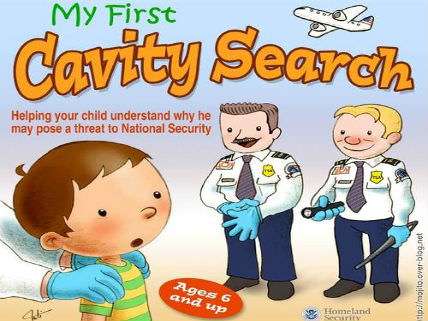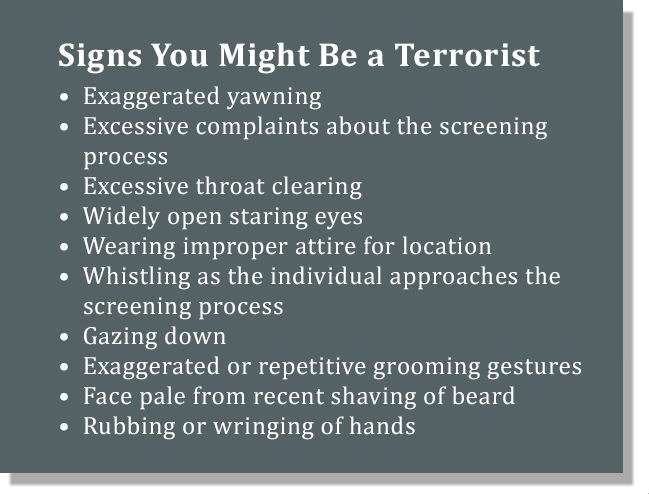Signs You May Be A Terrorist - What Did I Do Wrong?
Did I get pulled off a plane because of improper attire? Did I yawn?

On Saturday while traveling back from a lecture tour in Russia and Ukraine, I was pulled off my United flight for additional screening at the Frankfurt airport in Germany. The door of the aircraft actually had already been closed and the passenger loading ramp had been moved out of the way. A couple of worried flight attendants anxiously kept asking me if I had had "additional" screening before settling into my center row seat in the middle of the airplane. No.
One very worried looking attendant went forward and evidently told the pilots that we couldn't leave. The ramp was brought back; I was walked off the plane with my backpack. It was searched by two fairly apologetic German security guards who asked if all the wires went with my electronics, i.e, computer, iPad, and Kindle? Yes. I was released and returned to my seat where I announced, "It has been determined that I am not dangerous." The flight left about 20 minutes late just so that my carry-on luggage could be checked by hand. I know it was not the Transportation Security Administration (TSA), but I suspect that the Germans were following some standards set by that agency.
Today the folks over at the Intercept are publishing the criteria used by the TSA's Screening Passengers by Observation Techniques (SPOT) program used to evaluate people for possible terrorist intent.

Perhaps suspicion about me was raised because of improper attire - I had packed my heavy coat rather than wear it. The temperature in Kiev when I left was 60 degrees Fahrenheit. Also I hadn't shaved that morning.
Given such vague criteria, it is not surprise that the SPOT program is mostly pseudo-science. As the Intercept notes:
Since its introduction in 2007, the SPOT program has attracted controversy for the lack of science supporting it. In 2013, the Government Accountability Office found that there was no evidence to back up the idea that "behavioral indicators … can be used to identify persons who may pose a risk to aviation security." After analyzing hundreds of scientific studies, the GAO concluded that "the human ability to accurately identify deceptive behavior based on behavioral indicators is the same as or slightly better than chance."
The inspector general of the Department of Homeland Security found in 2013 that TSA had failed to evaluate SPOT, and "cannot ensure that passengers at United States airports are screened objectively, show that the program is cost-effective, or reasonably justify the program's expansion."
Despite those concerns, TSA has trained and deployed thousands of Behavior Detection Officers, and the program has cost more than $900 million since it began in 2007, according to the GAO.
The American Civil Liberties Union is suing to get the TSA to disclose its search criteria. Go here to read the whole Intercept article.
